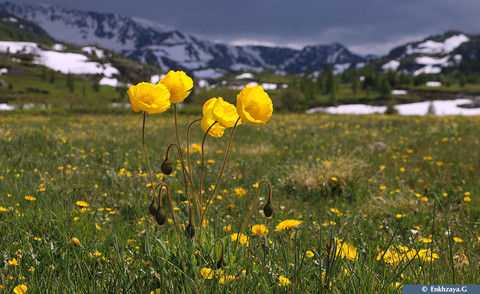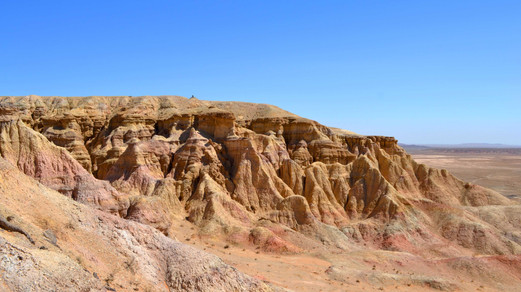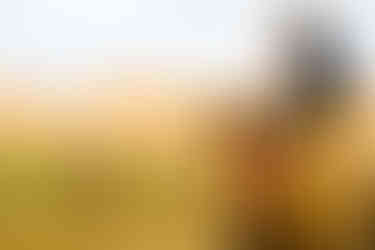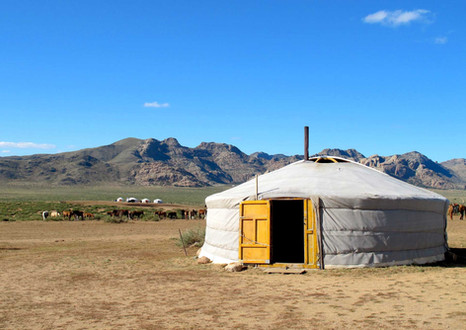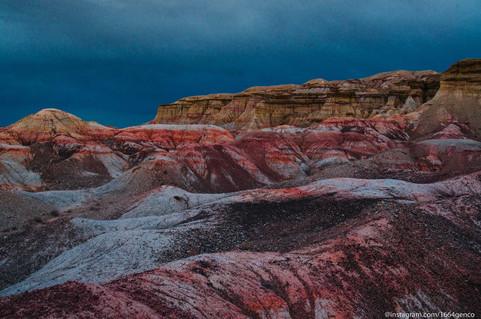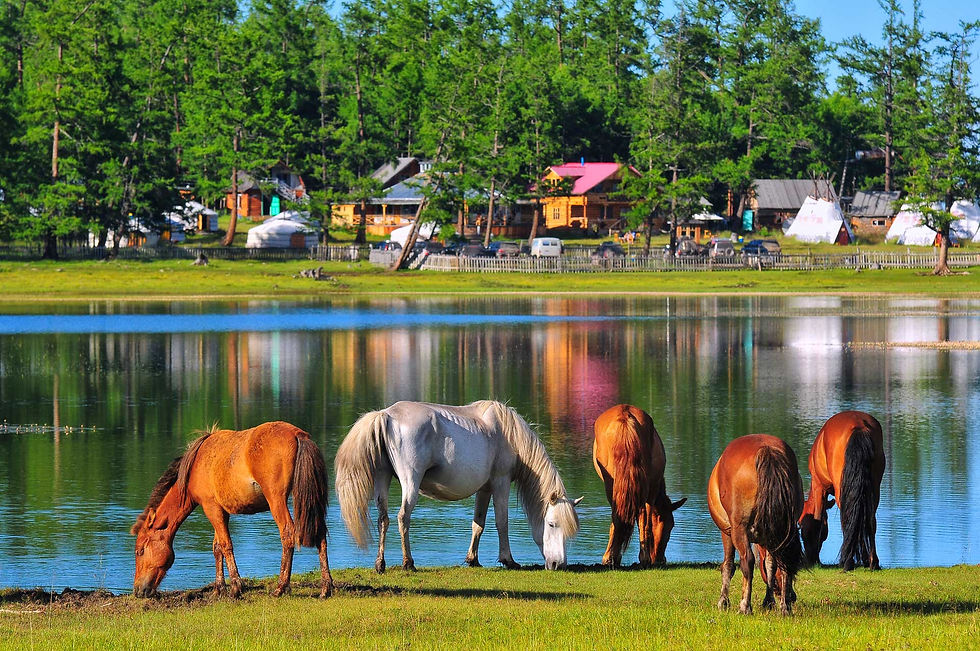Top five Mongolian travel destination
- Enkhzaya Ganbold

- Jun 16, 2019
- 5 min read
Updated: Jul 5, 2023
The Mongolian steppes and their nomadic people, horses, animals and gers form a cultural and beautiful landscape. This is the region’s main attraction, the vital image in Mongolian marketing, the key feature of its flagship tourism services, and the most heavily commoditised element of its industry.
On the other hand, Mongolian landscapes, and also in the steppes of neighbouring regions and the grasslands of Australia, Africa and North America, cultural and natural heritage are treated as separate attractions. The concept of the cultural landscape is actively used in a World Heritage context, has a primary role to play in the global tourism industry, and deserves further investigation as a tool for analysis.
5. ORKHON VALLEY - WATERFALL AND VOLCANIC SCENERY
The Ulaan Tsutgalan Waterfall on the Ulaan River runs through volcanic basalt rocks formed by the unique mixture of volcanic eruptions and earthquakes around 20 thousand years before.
The Ulaan Tsutgalan Waterfall falls from a dramatic height of 20 meters with a width of 10 meters and expands for 100 meters from the Orkhon River. Additionally, the waterfall is naturally most impressive after heavy rain but disappears in dry seasons.
Place and things to see:
Nomadic family
Orkhon River
Waterfall
Rocky scenery
Things to do:
Hiking and discovering the around
Camel and horseback riding
Photoshooting
Climbing to the Dunes
Exploring the wild animals
4. THE ALTAI TAVAN BOGD - NATURAL RESERVE AND COMPLEX

Mongolian called “The top of Mongolia”, Altai Tavan Bogd National Park is in the far west of Mongolia nearby the borders of China and Russia. The park has an area of 636000 hectares, and the highest point is the peak of Khuiten Uul reaching 4300 meters above sea level.
Altai Tavan Bogd means Five Holy Peaks of Altai, Khuiten, Naran, Ulgii, Burged and Malchin. The park includes Mongolia’s highest peaks, perpetually snow-capped with beautiful glaciers including the 20 km long Potanin Glacier, the longest in Mongolia.
The stunning freshwater lakes of Khoton, Khurgan, and Dayan are there in the park. Fauna includes Argali the wild sheep, ibex, Maral (Asiatic red deer), stone marten, deer, elk, Altai snowcock and brown head eagles.
There are many archaeological sites with many Balbal - Turkic stone figures, deer stone monuments, burial mounds, and petroglyphs.
Places and things to see:
Eagle hunters
Nomadic family
Lakes and rivers
Flowers and fruits
Things to do:
Hiking and discovering the around
Camel and horseback riding
Photoshooting
Climbing to the Dunes
Exploring the wild animals
3. THE TERELJ NATIONAL PARK AND CHINGGIS KHAAN MONUMENT

One of the focus of Mongolia, Terelj National Park, is a pleasant place of high granite mountains that were eroded by natural forces. This creating a magnificent landscape of granite tors as if sculpted by some gigantic sculptor. The Terelj is only 60-70 km east of Ulaanbaatar.
The Terelj National Park was established in 1993 and covers an area of 2900 square km in the southern Khan Khentii Mountain Range. The park has a landscape of transition from Siberian taiga forest to grass steppe. In summer the meadows, carpeted with colourful flowers, mountain pine forests and extensive streams make this one of the most magnificent areas in Mongolia. The most visited place in the park is the Turtle Rock formation and Aryabal Meditation Temple.
Chinggis Khaan’s Statue
The Chinggis Khan Statue complex is located in “Tsonjin Boldog”, a historical place where Chinggis Khaan found his golden whip. The statue was created as a memorial to the Man of the Millennium “Chinggis Khaan”. The 40-meter high stainless steel statue of Chinggis Khaan on horseback is the largest of its kind in the world. The visitors allowed go to the top of the horse’s head and have a farseeing and panoramic view over the affected area.
Places and things to see:
Aryabal Monastery
Turtle Rock
1000 Lama’s cave
Things to do:
Hiking and discovering the around
Camel and horseback riding
Photoshooting
Climbing to the Dunes
Exploring the wild animals
2. BLUE PEARL OF MONGOLIA - THE KHUVSGUL LAKE

In every year, many tourists visit the Pear of Mongolia the Lake Khuvsgul. This is one of the most local and foreign tourists attracted place because of the purest lake, beautiful nature, nomadic and reindeer people. Below information help you to get some info about Khuvsgul lake before you travel to Mongolia. We are a Mongolian travel agency to organise the Mongolia trips to Khuvsgul lake every year.
Being located at 101 kilometres north of Murun city, stretching over Alag-Erdene, Renchinlkhumbe, Khankh and Chandmani-Undur soums of Khuvsgul province, it covers 2,760 sq. Meters of the area is 34-36 kilometres wide, 136 kilometres long and is located at 1,645 meters above sea level.
The lake was formed 7 million years ago. Shore length is 414 kilometres, and it is ranked at No. 14 in the world for its freshwater reserve and No. 2 in Asia.
Forty-six rivers flow into Khuvsgul Lake, which makes up 1% of the freshwater reserve of the world. Even though 70 per cent of the lake floor rests at more than 100 meters deep, water transparency reaches down to 24.5 meters.
More than 12 species of fish, including Siberian grayling and sturgeon. The lake freezes entirely by the end of November and ice width reaches down to 1 meter. It is surrounded by mountain ranges including Khoridol Saridag and Bayan mountain ranges at 3,000-3,200 meters great rest at its south-west side.
Khuvsgul lake has four islets called Modon khui, Khadan khui, Dalain khui and Baga khui. The largest is Dalain khui which is raised at 126 meters above the water surface, are 3 kilometres long, 2 kilometres wide and its 5.8 sq. Meters of the area is covered in thick forest.
Khadan khui islet has tall cliffs where seagulls rest in large numbers. Khadan khui islet is 200 meters wide and 800 meters long.
Modon khui islet has beautiful scenery. Khadan khui and Modon khui islets are located at 40 kilometres apart from each other.

Places and things to see around:
Discovering the Tsaatan people (Reindeer people)
Khuvsgul Lake
Nomadic family
Things to do:
Hiking and discovering the about
Camel and horseback riding
Photoshooting
Climbing to the Dunes
Exploring the wild animals
1. MONGOLIAN GREAT GOBI DESERT
The Mongolian Gobi Desert is the most mystical and unique places in the world. The Mongolian Gobi is an enormous zone of the Gobi Desert and amazing desert steppe.
There are thirty-three different geographic zones in the Gobi of which sandy desert occupies only 3 per cent of the overall area. The Mongolian Gobi is often imagined as a lifeless desert, similar to the African Sahara Desert. Indeed, most of the Mongolian Gobi is a land of steppes, and many camel breeders inhabit this zone that is rich in wildlife and vegetation.
The Mongolian Gobi is surprisingly full of wildlife such as two-humped Bactrian camel, wild Argali sheep, ibex, wild camel, khulan wild ass, white and black-tailed gazelle, snow leopard, endangered Gobi bear “Mazaalai”. The Mongolian Gobi Desert was the site of some of the most famous dinosaur fossil discoveries. That includes the world’s first dinosaur egg nests some of which can be seen in the Museum of Natural History in Ulaanbaatar.
There are many things to do in the Gobi: climb the highest dunes, see the beautiful Gobi sunset, visit a camel breeder’s family, enjoy camel riding, trek in the green oasis, explore Dinosaur Lands’ Flaming Cliffs. Around Flaming Cliffs, the first dinosaur egg nests were found or other areas of Dinosaur Lands, and hike in Bearded Eagle’s Canyon. This is the most relaxed place of the Gobi even in the hot summer and many more.
Places to see around:
Khongor Sand Dunes
Bayanzag – “Flaming Cliffs.”
Khermen Tsav – dinosaur’s land
Tsagaan Suvarga – the ancient sea bank
Dalanzadgad – city
Things to do:
Hiking and discovering the around
Camel and horseback riding
Photoshooting
Climbing to the Dunes
Exploring the wild animals










